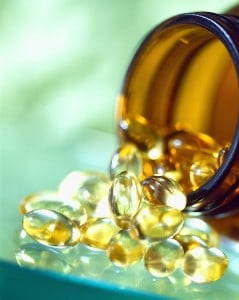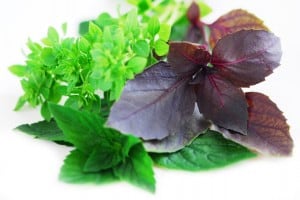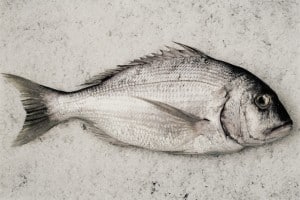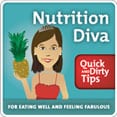Part of the fun of a CSA-share is the opportunity to try vegetables that would otherwise never end up in my shopping cart, such as the sweet potato leaves I wrote about a couple of weeks ago. One of our options this week was purslane, a plant related to the portulacas you might plant in your garden. I first read about purslane in Artemis Simopoulos’s book The Omega Diet. Purslane is one of the richest vegetable sources of omega-3 fatty acids.
See also: Purslane as a source of omega-3s: A reality check
A big part of the reason that the meat from pasture-raised cattle (and wild game) is higher in omega-3 fats is because grazing animals favor these succulent wild greens and will eat them preferentially over other grasses. It makes good grazing for people, too. According to research published in the Journal of the American College of Nutrition, 100 grams of purslane contains 300-400 mg of omega-3 fats (alpha-linolenic acid), along with over half a day’s supply of vitamin E, a third of the day’s vitamin C, and a quarter of the day’s vitamin A. But does it taste good?
I’d never bought or cooked with purslane before. In fact, I’d never even seen it at the grocery store. But in her weekly email to us One Straw Farm shareholders, our farmer Cheryl Wade gave it a big drumroll:
“The tips, either in or out of flower are cute enough for garnish and add a definite zip to fresh salads. You can also steam it, stems and all and serve it with oil and vinegar or butter and soy sauce or most people need nothing on it at all. When you have a bumper crop you can start steaming piles of Purslane and popping it in the freezer as a blessed addition to soups. It does a nice job of thickening the soup, too. Purslane can be substituted for spinach or wild greens in lasagnas, filled pastas, and Greek-style tarts.”
I couldn’t wait. When I got to the market on Thursday, however, I opted out of the purslane and chose other vegetables instead. Why? Because once I saw it, I realized that I’ve got all the purslane I need growing in my garden! I bet you do, too. It sprouts up everywhere, in between the cracks in the terrace, along the sidewalk, and in flower and vegetable beds. In fact, I spend a good part of the summer weeding it! Here’s what purslane looks like:

As it happens, my personal crop was a little depleted by some power weeding we did over the weekend, but experience tells me it will be back soon. So instead of weeding the next batch, I plan to harvest it and try some of Cheryl’s suggested preparations. I’ll let you know how it goes. If you haven’t weeded your garden recently (and haven’t sprayed any chemicals on it), you might enjoy some purslane today. Here’s a couple of other serving suggestions from The Omega Diet (p. 157):
“When you first try purslane, serve it raw tossed with olive oil, lemon juice, salt, and pepper. Delicious. Once you’ve gained appreciation for its delicate flavor and unique texture (like a cross between tender pea pods and a buttery lettuce), add it to mesclun, toss it in soups, or saute briefly in butter and serve with a light cream sauce.”
 A recent study in the American Journal of Clinical Nutrition reports that a higher intake of omega-3 fatty acids from fish does not appear to reduce the risk for depression. It’s the latest disappointment in a slew of recent studies finding that fish oil failed to help prevent or slow Alzheimers, atherosclerosis, atrial fibrulation, or kidney disease.
A recent study in the American Journal of Clinical Nutrition reports that a higher intake of omega-3 fatty acids from fish does not appear to reduce the risk for depression. It’s the latest disappointment in a slew of recent studies finding that fish oil failed to help prevent or slow Alzheimers, atherosclerosis, atrial fibrulation, or kidney disease.
 Q. Do dry herbs and spices have the same nutritional benefits as their fresh counterparts or are they only good for flavor?
Q. Do dry herbs and spices have the same nutritional benefits as their fresh counterparts or are they only good for flavor?  Q. I’ve listened to your podcast on
Q. I’ve listened to your podcast on 
